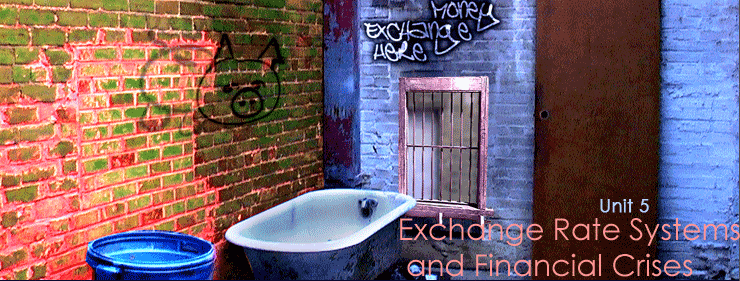|
Unit 5: Exchange Rate Systems
Introduction
One of the principle
problems of a liberal global economy is the exchange rate
system. The exchange rate system determines how the value
of currencies will adjust to patterns of trade.
-
Why is the dollar worth 126 yen?
-
What
happens when it is worth only 114 yen?
-
What
might cause such a shift?
-
How
do such changes affect countries with respect to trade?
Such
questions are especially important given the relative frequency
of financial crises—periods in which the value of foreign
currencies is subject to wild fluctuation—in a liberal
world economy. Indeed, even though most economists agree that
international markets and free trade in goods are usually
worthwhile, there is no such agreement when it comes to markets
for foreign exchange. In fact, some economists believe it
would be better to somehow “fix” the price of
one currency against another. This unit examines the history
of exchange rates systems, the theories behind them, and some
contemporary examples of their use (and failure).
|
All files © Copyright 2010 UNCG DCL
Please report any problems or errors to the Site
Admin
Our Privacy Policy
|
|
|


